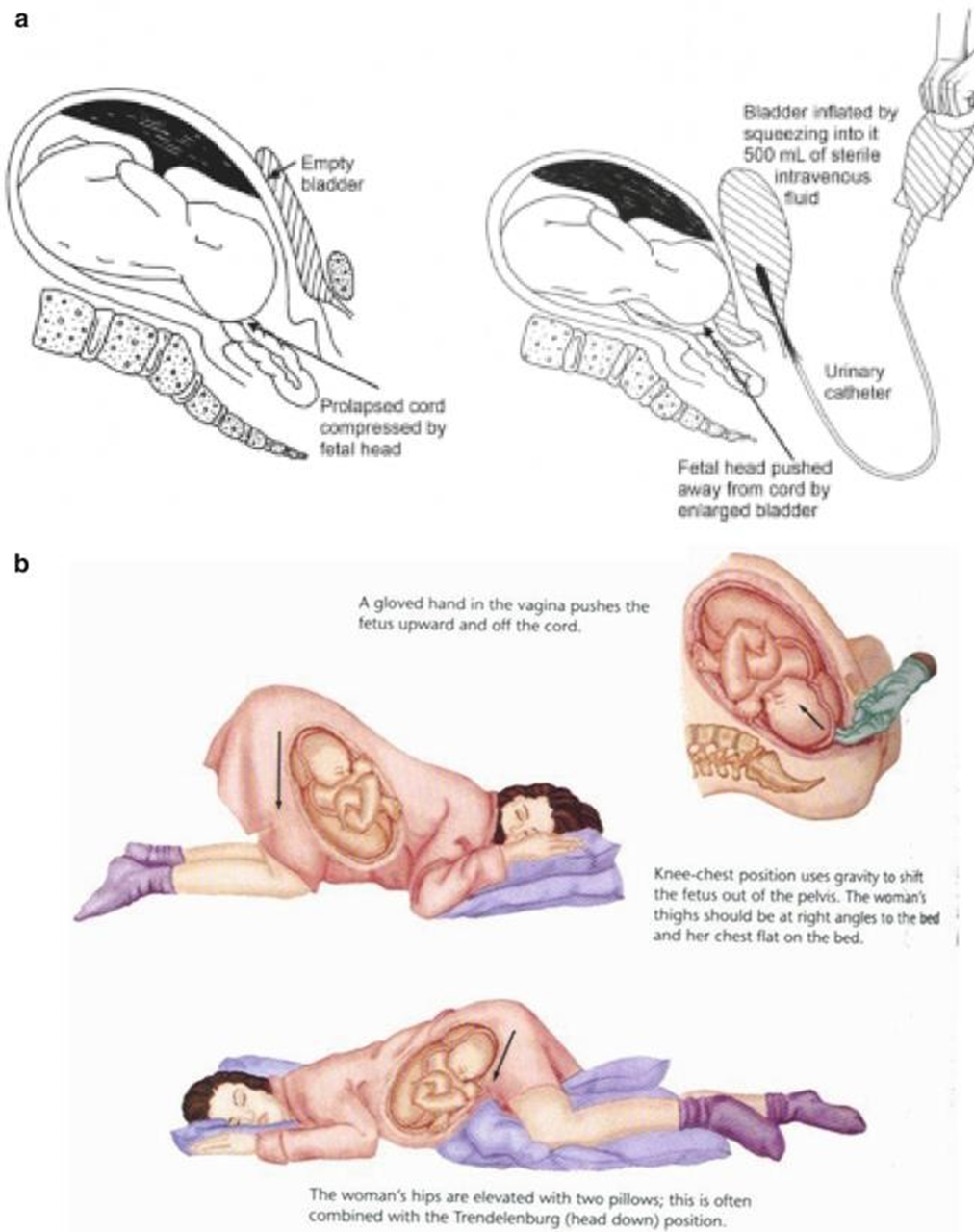A nurse is caring for a client who is in labor and notes that the umbilical cord is prolapsed. Which of the following actions should the nurse take?
Evaluate uterine tone.
Loosely wrap the cord with petroleum gauze.
Place the client in Trendelenburg position.
Apply fundal pressure.
The Correct Answer is C
A. While evaluating uterine tone is part of routine labor monitoring, it does not address the urgent need to relieve pressure on the prolapsed umbilical cord.
B. Keeping the cord moist is less of a priority than immediate measures to relieve pressure on the cord.
C. For a prolapsed umbilical cord, the immediate goal is to relieve pressure on the cord to maintain fetal oxygenation. Placing the client in the Trendelenburg position or a knee-to-chest position can help reduce the pressure on the cord by using gravity to shift the fetal presenting part toward the diaphragm.
D. Applying fundal pressure is contraindicated in the case of umbilical cord prolapse as it can increase pressure on the cord and exacerbate fetal distress.

Nursing Test Bank
Naxlex Comprehensive Predictor Exams
Related Questions
Correct Answer is C
Explanation
A. Using up to 40 nicotine lozenges per day is excessive and may lead to nicotine toxicity.
B. Substituting tobacco use with an electronic cigarette is not recommended due to potential health risks associated with vaping.
C. Nicotine replacement therapy, such as nicotine gum, should be used for a limited duration to avoid dependence. The nurse should educate the client to limit the use of nicotine gum to no more than 6 months to achieve smoking cessation goals effectively.
D. Using progressively larger nicotine patches is not a standard practice and may increase the risk of nicotine overdose.
Correct Answer is D
Explanation
A: The sterile field should be set up at or above waist level to prevent contamination from higher surfaces, not below.
B: The outer edge (about 2.5 cm or 1 inch) of the sterile field is considered non-sterile, so placing the sterile dressing close to the edge risks contamination.
C: The outermost flap of the sterile kit should be opened away from the body to avoid reaching over the sterile field, which could lead to contamination.
D: The cap should be placed sterile side up to maintain its sterility if it needs to be reapplied to the solution bottle.
Whether you are a student looking to ace your exams or a practicing nurse seeking to enhance your expertise , our nursing education contents will empower you with the confidence and competence to make a difference in the lives of patients and become a respected leader in the healthcare field.
Visit Naxlex, invest in your future and unlock endless possibilities with our unparalleled nursing education contents today
Report Wrong Answer on the Current Question
Do you disagree with the answer? If yes, what is your expected answer? Explain.
Kindly be descriptive with the issue you are facing.
